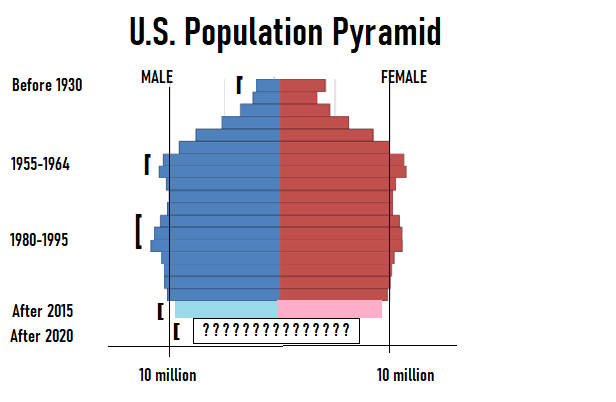 This demographic pyramid, based on U.S. Census Bureau data, shows how many people in each five-year age group might live in the United States in 2025. (Image: U.S. Census Bureau)
This demographic pyramid, based on U.S. Census Bureau data, shows how many people in each five-year age group might live in the United States in 2025. (Image: U.S. Census Bureau)
MetLife has early observational data that could settle a dispute between Brookings Institution demographic forecasters and other prognosticators.
Many forecasters have suggested that the COVID-19 pandemic could lead to a new baby boom, by giving couples more time at home together.
Analysts at the Brookings Institution have predicted, based on consumer surveys and demographic data for the period following the 1918 influenza pandemic, that the number of U.S. births could fall by about 300,000 to 500,000 this year, because of health concerns and the effects of the pandemic on the economy.
(Related: Expect a Baby Bust in 2021)
MetLife has an indication that the Brookings analysts are correct: Enrollees in the group short-term disability plans MetLife runs for employers are filing fewer pregnancy-related STD claims.
MetLife sells employers group STD coverage, and it also administers group STD plans for employers that choose to self-insure.
STD claims for pregnancy-related leave fell 20% between the fourth quarter of 2019 and the fourth quarter of 2020, according to Phil Bruen, a senior vice president for group life and disability product management at MetLife.
The drop occurred about when pregnancies that started early in the pandemic lockdown period would have resulted in pregnancy-related claims, Bruen said in an email.
The United States has been recording about 3.9 million births per year in recent years. The number dropped below 3.8 million in 2018 and 2019, according to National Center for Health Statistics data.
The kinds of new parents who have STD coverage provided or administered by MetLife may be different from parents in the general population.









 February 08, 2021 at 01:43 PM
February 08, 2021 at 01:43 PM











